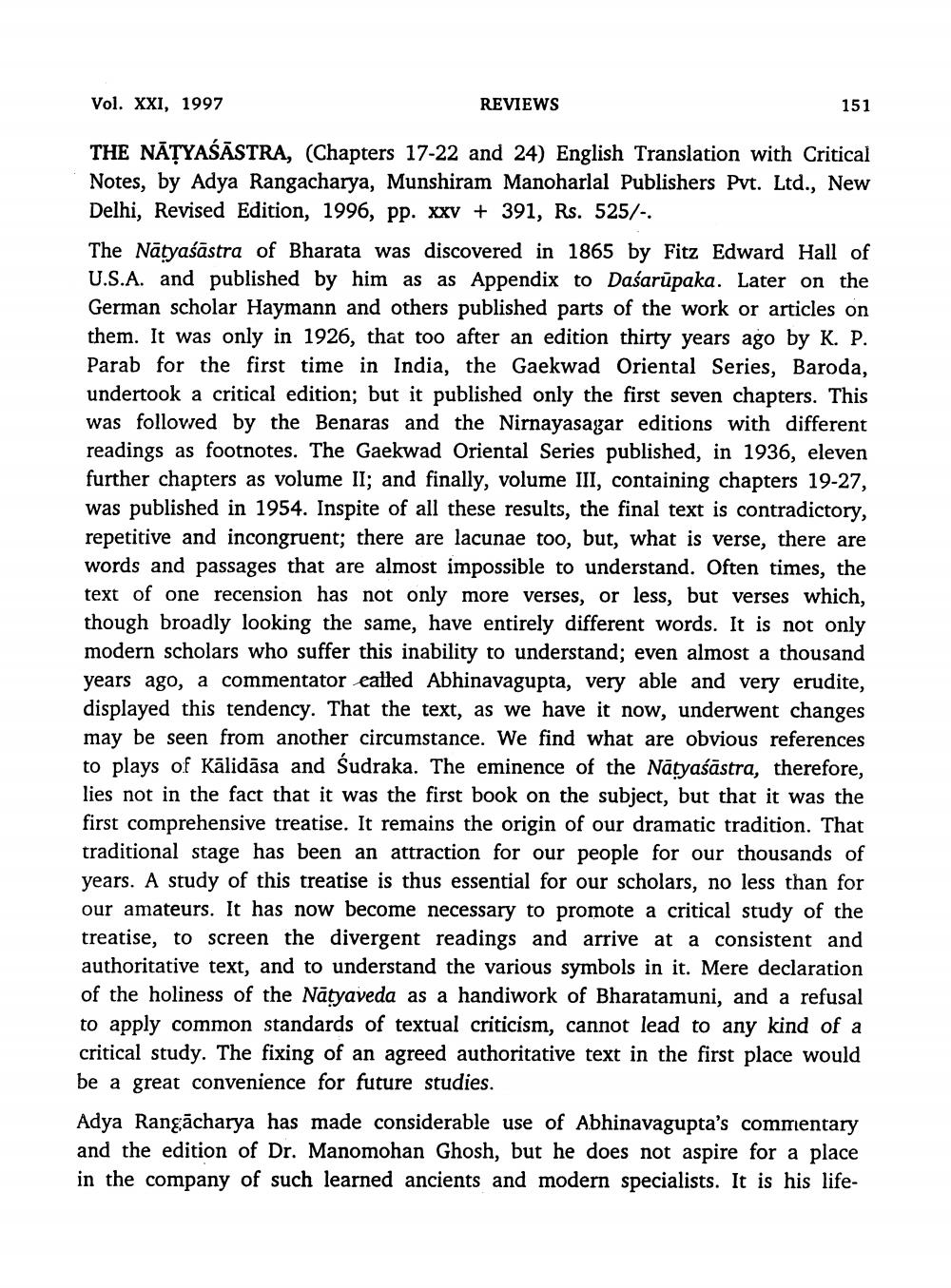________________
Vol. XXI, 1997
REVIEWS
151
THE NĀȚYAŚĀSTRA, (Chapters 17-22 and 24) English Translation with Critical Notes, by Adya Rangacharya, Munshiram Manoharlal Publishers Pvt. Ltd., New Delhi, Revised Edition, 1996, pp. XXV + 391, Rs. 525/-. The Nātyaśāstra of Bharata was discovered in 1865 by Fitz Edward Hall of U.S.A. and published by him as as Appendix to Dasarūpaka. Later on the German scholar Haymann and others published parts of the work or articles on them. It was only in 1926, that too after an edition thirty years ago by K. P. Parab for the first time in India, the Gaekwad Oriental Series, Baroda, undertook a critical edition; but it published only the first seven chapters. This was followed by the Benaras and the Nirnayasagar editions with different readings as footnotes. The Gaekwad Oriental Series published, in 1936, eleven further chapters as volume II; and finally, volume III, containing chapters 19-27,
published in 1954. Inspite of all these results, the final text is contradictory, repetitive and incongruent; there are lacunae too, but, what is verse, there are words and passages that are almost impossible to understand. Often times, the text of one recension has not only more verses, or less, but verses which, though broadly looking the same, have entirely different words. It is not only modern scholars who suffer this inability to understand; even almost a thousand years ago, a commentator called Abhinavagupta, very able and very erudite, displayed this tendency. That the text, as we have it now, underwent changes may be seen from another circumstance. We find what are obvious references to plays of Kālidāsa and Sudraka. The eminence of the Nātyaśāstra, therefore, lies not in the fact that it was the first book on the subject, but that it was the first comprehensive treatise. It remains the origin of our dramatic tradition. That traditional stage has been an attraction for our people for our thousands of years. A study of this treatise is thus essential for our scholars, no less than for our amateurs. It has now become necessary to promote a critical study of the treatise, to screen the divergent readings and arrive at a consistent and authoritative text, and to understand the various symbols in it. Mere declaration of the holiness of the Nātyaveda as a handiwork of Bharatamuni, and a refusal to apply common standards of textual criticism, cannot lead to any kind of a critical study. The fixing of an agreed authoritative text in the first place would be a great convenience for future studies.
Adya Rangācharya has made considerable use of Abhinavagupta's commentary and the edition of Dr. Manomohan Ghosh, but he does not aspire for a place in the company of such learned ancients and modern specialists. It is his life




